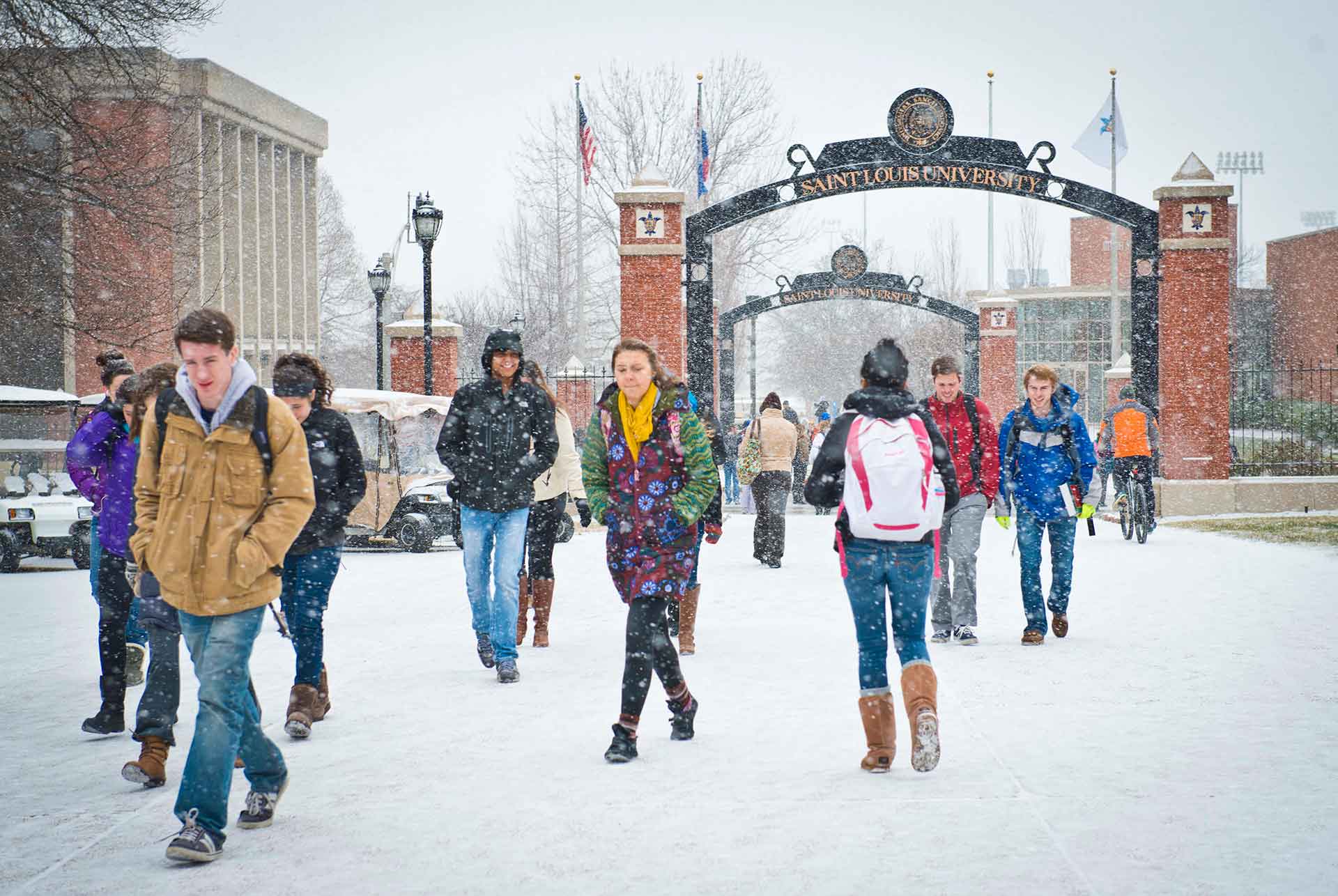SLU Research Predicts Storms, Power Outages Before They Strike
The threat of ice accumulations of up to half an inch, widespread power outages and treacherous road conditions for crews around the St. Louis metro area loom when forecasts predict record-level snows.
But this weekend — even before snow totals reached double digits — there was reason to believe the lights would stay on.
Researchers from Saint Louis University's QuantumWeather project, a partnership between Ameren Missouri and Saint Louis University researchers, predicted ice would stay to the south for this weather event and snow wouldn't be the particularly wet heavy variety that knocks down tree limbs.
It's the kind of information SLU meteorology professor Robert Pasken, Ph.D., calls "actionable intelligence."
What is QuantumWeather?
The QuantumWeather project allows Ameren Missouri to plan its response to areas that SLU’s team predicts will be most severely affected by severe weather — days in advance.
Detailed, near real-time information, is sent over Ameren Missouri's radio communications systems to central computers in SLU's department of earth and atmospheric sciences. Using computer models and analytical tools created by SLU researchers, the system produces highly detailed maps of weather activity that may affect neighborhoods across Ameren Missouri's service territory. This weather data is combined with the type, health and height of the trees, where the power lines are located to produce a time varying map of where to expect damage to the power grid. Using this map Ameren can better respond to outages by prepositioning resources to restore power as quickly as possible
Weather information is gathered from more than 100 sensors around the state and weather balloons loaded with instruments that probe the vertical structure of the atmosphere launched by SLU researchers.
From Pollen to Power Grids
The QuantumWeather project began as an effort to forecast pollen concentrations but became linked to severe weather after a historic ice storm hit the St. Louis area in 2006, leaving hundreds of thousands of households without power.
Pasken and William Dannevik, Ph.D., a former chair of SLU’s department of earth and atmospheric sciences, approached Ameren Missouri with a solution.
It soon had a chance to prove itself. Another ice storm hit in southern Missouri in 2009.
Yes, we're doing something for the local community but we're also doing something for people outside our own little neighborhood"
SLU meteorology professor Robert Pasken, Ph.D.
Forecasting Response Days in Advance
Ameren Missouri was able to bring crews in 24 hours in advance, Pasken said. Outages occurred but all power was restored in nine days, whereas a neighboring utility took up to six weeks to do the same.
“Data captured by QuantumWeather helps us pinpoint the timing and location of severe weather more accurately so we’re able to position line crews and resources more quickly,” said Kevin Anders, assistant vice president of operations at Ameren Missouri.
During a weather event like this weekend's snow, a team of faculty members, a postdoctoral researcher and graduate students rotate on and off in 12-hour shifts, adjusting predictions and staying in constant communication with the utility.
National Reach
But the team is at work even when the metro region isn't in the crosshairs.
Pasken just returned from the American Meteorological Society's annual conference, where he spoke about how QuantumWeather research assisted in Ameren's response to hurricanes Maria and Florence last summer.
What do landlocked utility workers and weather researchers have to do with hurricanes? A lot, when mutual aid requests come in.
Utility crews from Missouri were needed in North Carolina; QuantumWeather researchers recommended when they should travel and what routes they should take.
Pasken said the project's national reach lives out the University's slogan of "higher purpose, greater good."
"Yes, we're doing something for the local community but we're also doing something for people outside our own little neighborhood," he said.
This article is an updated version of a story first reported in 2017.


















